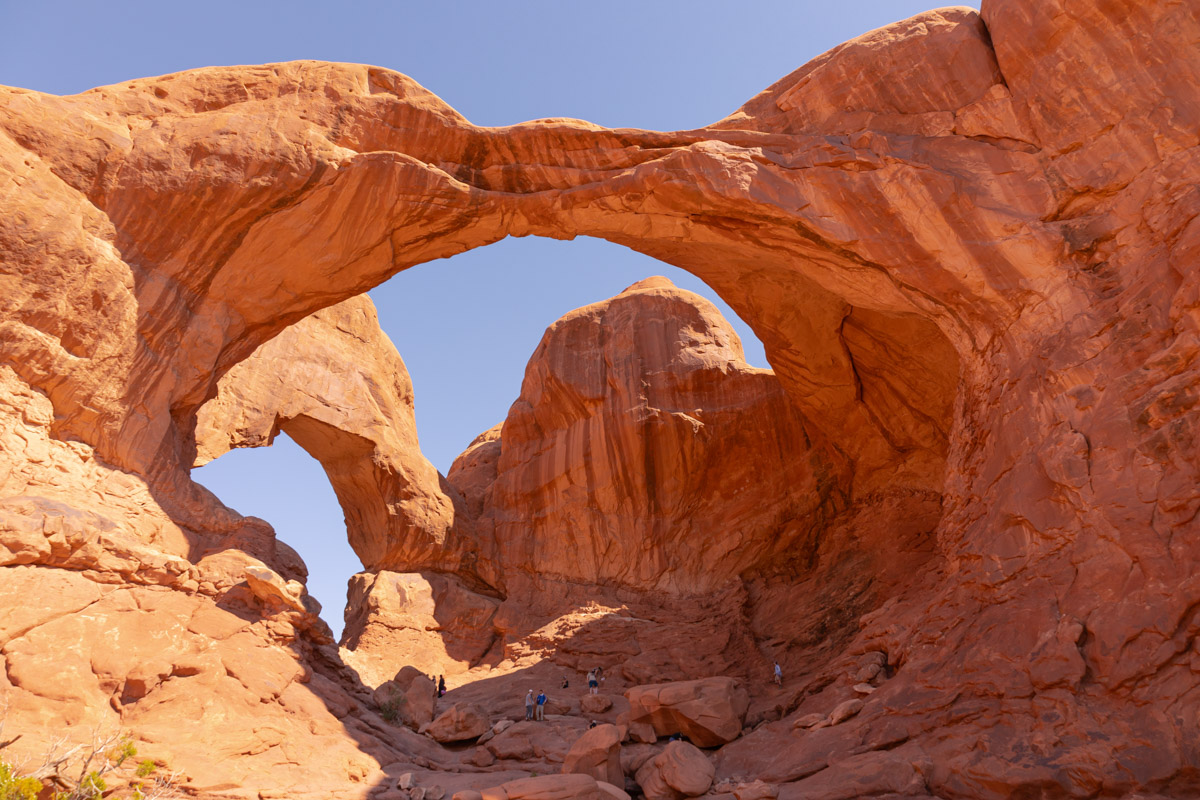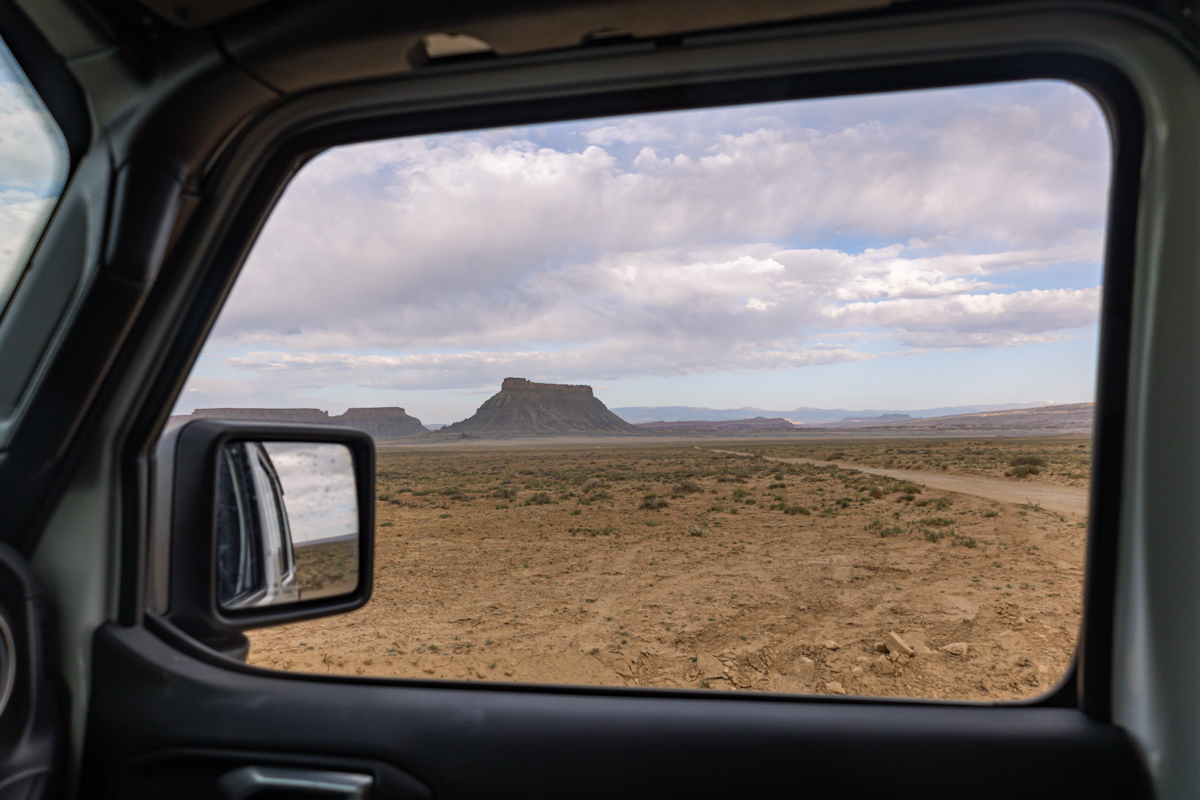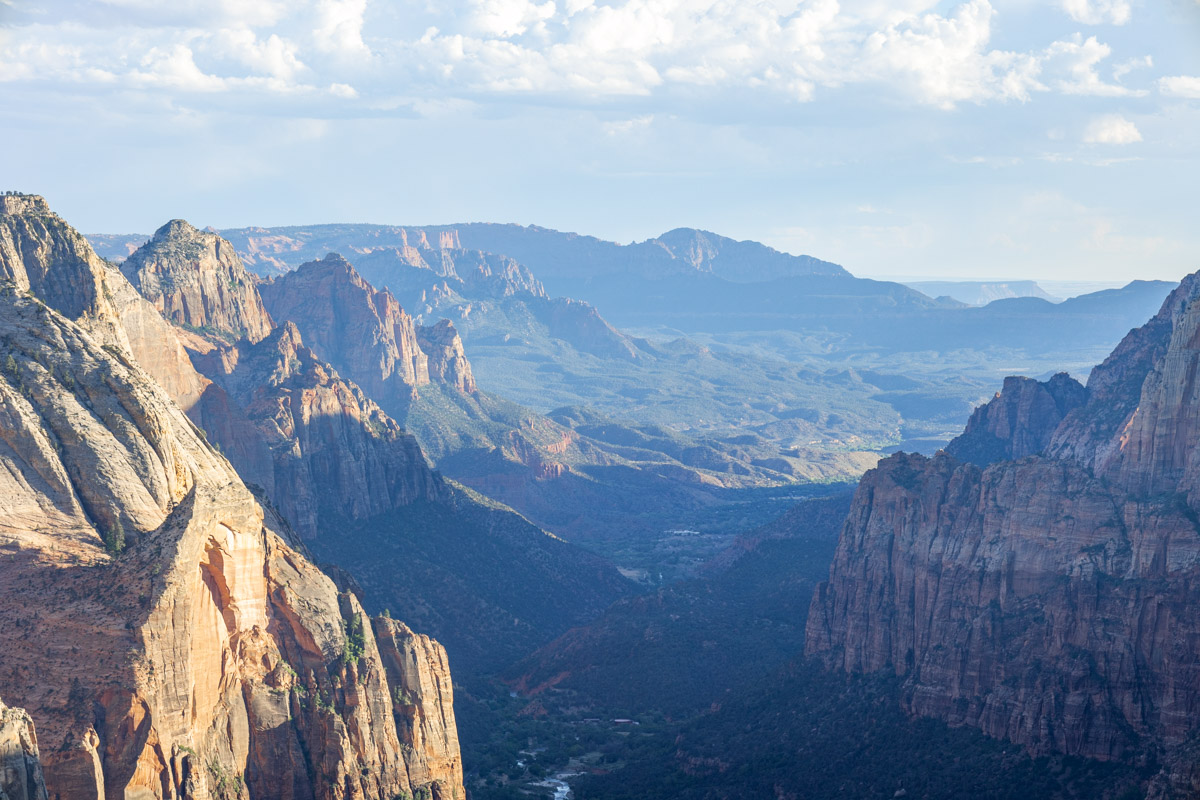What I learnt on a solo road trip through Utah is that it’s a dream destination for travellers, photographers, and adventurers. Its vast landscapes, dotted with red rock canyons, dramatic cliffs, and serene desert expanses offer something for everyone. Whether you’re an experienced road tripper or embarking on your first solo adventure, I hope these 5 things I learned while driving over 1,685 miles across Utah will help you on your journey, too.
From packing essentials to planning, and even staying connected, everything to help you make the most of your Utah road trip is below.
This post may contain affiliate links. Your purchase through these links supports me with a commission, at no added expense to you.W
DISCONNECT BUT STAY CONNECTED
While the beauty of solo travel lies in disconnecting from the daily grind, it’s important to stay connected. This is especially when venturing into Utah’s remote regions. What I learnt on my solo road trip through Utah is that in many areas, you’ll loose cell service entirely. These are just some of the things I did to help in these moments:
- Purchase an eSIM: If you’re from out of the US, use Holafly. It’s an eSIM which provided great coverage across Utah, and covered all the other states too.
- Download offline maps from Google: Google Maps allows you to download specific areas for offline use. A feature that came in handy more times than I can count! Especially while hiking, there was at points no service. However, with offline maps, I could still find my way back to the trailhead without any issues.
- Carry a portable charger: GPS, photography, and entertainment apps can drain your phone quickly so a portable charger was essential. An extra charging cord, specifically for your vehicle is also handy to have. This was so I wasn’t needing to remember it every time I left for an adventure.
- Use AirTags or Find My app: Investing in Apple AirTags allowed me to track my bags and gear, providing extra security. Sharing my location on the Find My app with friends and family added another layer of safety, ensuring someone always knew my whereabouts.
- Send your itinerary to friends and family: Before leaving, I shared my full itinerary to friends and family. This was a Google doc so each time it was updated they would be able to see these details. I also checked in and updated them on my location. Sharing your plans gives peace of mind. It’s also a good to note down emergency contacts for local authorities in case of any unexpected incidents.
PLANNING IS CRUCIAL.. BUT SO IS SPONTANEITY
A solo road trip through Utah requires careful planning, especially if you intend to visit all five national parks—Arches, Bryce Canyon, Canyonlands, Capitol Reef, and Zion. Each park has its own unique landscape and activities, so mapping out your route and preparing for various weather conditions is essential. However, one of the best things I learnt on a solo road trip through Utah is that flexibility is just as important.
In terms of planning there were a few things that I made sure to do. First was to check trail conditions and weather. Utah’s weather can change rapidly, particularly in spring and fall. By checking daily forecasts it saved me from driving too far out of my way. As most of my trip revolved around hiking and trails I also made sure to check trail updates. You can do this by visiting the National Park Service website.
One of the other things I planned was a reliable vehicle. When you’re driving to remote areas like Bentonite Hills or Moonscape Overlook it’s a non-negotiable. I rented a 4×4 Jeep Wrangler that was perfect for a solo trip through Utah. It was reliable and could handle rugged terrain.
While I did plan out each day’s drive and activities, I left space for the unexpected. Thankfully, most days went as planned. However after some long travel stretches, there did come a point where I chose to skip an afternoon of exploring to rest. What I learned is that even with ideal conditions, sometimes it’s best allow yourself the time to recharge.

WHAT YOU PACK WILL INFLUENCE YOUR TRIP
Packing strategically can make or break your experience on a solo road trip, especially in a place like Utah where the landscapes and weather can vary dramatically. From hot desert sun to cooler mountain areas, being well-prepared ensures you’re ready for anything. What I learnt on a solo road trip through Utah is that packing thoughtfully is key to enjoying both the journey and the destinations.
As my road trip included an additional three weeks through the U.S., I packed for a range of different scenery. Ideally I would have packed much lighter but I’m glad I was able to cover myself for all situations.
Here are some items that significantly helped my comfort, safety and time during my Utah road trip:
- Sun protection: Seems like an obvious one but definitely worth mentioning. This was across a range of different items as Utah’s sun can be intense. A high-SPF sunscreen, hats, and sunglasses were a must when packing.
- Clothing layers for temperature swings: Utah’s weather can change quickly, especially in higher elevations or desert areas where daytime heat turns into chilly nights. I packed clothing that I could easily layer. The likes of my North Face puffer vest, and a merino jumper–a great a moisture-wicking base layer we perfect. They also wont take up much room in your pack.
- Footwear for All Terrain: These solid Hoka One Womens Challenger trail shoes were so helpful on my road trip through Utah. They were perfect for exploring trails, but also great for casual wear.
- Water bladder or reusable water bottle: Utah’s dry climate makes staying hydrated a priority, especially if you plan on hiking. A water bladder or a refillable water bottle are environmentally friendly. They also help you keep track of your water intake throughout the day and are incredibly convenient if hiking through Utah’s Mighty 5.
- Reliable backpack: Make sure your backpack is designed for outdoor activities, with padded straps for comfort on trails as well as for general day to day use.
- Portable clothesline: A lightweight portable clothesline meant I could quickly wash and dry my clothes whilst travelling from place to place.
- Carry pepper spray for peace of mind: As a solo traveller, particularly a female one, safety was a big consideration. While Utah is ranked among the safest in the U.S carrying pepper spray gave me peace of mind. I never had to use it, but having it on hand offered an extra layer of security, even on hikes.
- First Aid Kit: A basic first aid kit is crucial for any road trip, but especially when you’re travelling solo and far from medical help. Include items like band-aids, antiseptic wipes, blister treatments, and pain relievers. Make sure to pack any prescription medications as well, and keep the kit easily accessible.
- Headlamp: Whether you feel like you’ll need it or not, a headlamp can be the ultimate addition to your packing list. From hiking to just being helpful in low light situations, I would highly suggest to have one on hand.
- Insect Repellent: While not always top of mind, insect repellent is essential for certain areas in Utah, especially near water or in shaded regions. A small bottle of DEET-based repellent saved me from multiple bites.
Even thought these items might seem insignificant, what I learnt on a solo road trip is that even the smallest things can be the most helpful. Using this list of essentials will ensure you’re prepared for Utah’s wide range of climates and activities.
ON-ROAD ENTERTAINMENT IS KEY
Long solo drives can become tedious without good entertainment. Utah’s stunning landscapes may be mesmerising, but there are stretches of road—especially between national parks where the scenery doesn’t change for miles. It’s just you and the open road.
One of the first things I learned on a solo road trip through Utah is to prepare multiple forms of entertainment. Pre-download podcasts, audiobooks, and playlists, as many remote areas lack cell service. Having these options ready can make all the difference on long drives.
Switching between different types of content—like podcasts, audiobooks, and music also helps keep your mind engaged and makes the journey much more enjoyable.

IF SOMETHING DOESN’T FEEL RIGHT, ADJUST YOUR PLANS
Solo road trips are empowering, but they also require you to stay highly attuned to your surroundings. While I never felt unsafe in Utah, I did learn to trust my instincts and adjust my plans if something felt off.
Whether it’s adjusting your route because of an uneasy feeling or opting for a well-reviewed hotel instead of a spontaneous Airbnb, safety should always be your top priority. What I learnt on a solo road trip through Utah is to filter accommodations by solo traveller reviews, making it easier to find trusted options. I booked most of my accommodation through Booking.com as it allows you to do this.
There were also times where I adjusted my plans due to being on the road longer than expected. It didn’t feel right after covering so much ground to then explore further, just to feel more exhausted. The journey totalling 1,685 miles across seven days was exhilarating, but required flexibility to handle long stretches of driving. To avoid burnout, I tried to build in breaks, sometimes pulling over in a safe spot for rest. If needed, I even called it earlier than planned to recharge properly for the next day.
Overall, adjusting your plans is never a bad thing, especially if it means that you are prioritising your safety and well-being.

FAQs
WHY ROAD TRIP UTAH SOLO
Personally, every year when I plan one of my bigger trips (4 weeks or more), I push myself out of my comfort zone and make at least one of those weeks solo. In the past, it’s allowed me to embrace solitude, meet new people along the way, and gain a deeper sense of independence.
In terms of why road trip Utah solo specifically, it’s clear that Utah is a pretty incredible state. Especially since you have the opportunity to hike ‘The Mighty 5’. These are Utah’s incredible National Parks–Arches, Bryce Canyon, Canyonlands, Capitol Reef, and Zion.
A road trip through Utah also allows you to explore at your own pace. There’s no shortage of things to see. The landscapes are vast and so varied ensuring that you have plenty to choose from. Doing a road trip solo also highlights the question of safety. But with Utah being one of the safest states in the U.S, a road trip through here is it a perfect choice.
WHAT IS THE BEST TIME TO VISIT UTAH
When I visited in May, Utah was my second stop on a month-long USA trip. Even though a little warmer in the southern areas like Moab, it was a perfect time to visit. As a rule of thumb I highly recommend choosing a time outside of peak season. You’ll have cooler temperatures, fewer crowds, and ideal road trip conditions.
Spring (April-May) and Fall (September-October) are widely regarded as the best times to visit Utah. During these seasons, temperatures are mild, especially in southern Utah’s desert regions, where summer heat can be overwhelming.
The spring bloom and fall foliage also offer stunning colours, making the landscape even more captivating. If you are visiting during the summer, it’s best to stick to early morning or late afternoons to avoid the scorching midday sun. Winter can also be an appealing time for experienced hikers or photographers, as snow-dusted canyons create surreal, less crowded landscapes. However, be prepared for some road and trail closures.
IS IT SAFE DOING A ROAD TRIP THROUGH UTAH SOLO
Yes, as mentioned previously, Utah is generally one of the safest states for solo travellers, and a road trip here is no exception. Utah consistently ranks high in safety measures across the U.S and as a solo female traveler, I never felt unsafe during my trip. The national parks, in particular, are well-frequented by other hikers and rangers, adding an extra layer of security.
That being said, taking commonsense precautions can make your solo trip even safer. I always made sure to put certain things in place like what I have mentioned above in my 5 Essential Tips of What I Learnt on a Solo Road Trip Through Utah.
DO YOU NEED A 4X4 TO TRAVEL UTAH?
In most cases, a 4×4 vehicle is not necessary unless you plan to venture off the beaten path. For the Mighty 5 national parks and most state parks, a regular car or SUV will suffice, as the roads leading into these areas are well-maintained. However, for more remote or rugged areas like Bentonite Hills or Moonscape Overlook, a 4×4 is highly recommended. These areas have dirt roads, which can become impassable without a high-clearance vehicle, especially after rain.
Even if you don’t plan on tackling difficult terrains, it’s worth ensuring your vehicle is reliable and capable of handling long distances. I did opted for a 4×4, which gave me peace of mind when traversing between parks and exploring some off-the-beaten-path areas.
WHAT ARE THE MUST-SEE PLACES ON A UTAH ROAD TRIP?
The must-see places in Utah depend on your interests, but here are some of the places I visited that were highlights on my road trip itinerary:
- Arches National Park: Double Arch and Delicate Arch.
- Bonneville Salt Flats: Just outside of Salt Lake City, this is a must-visit.
- Bentonite Hills: Make sure to visit at sunrise or sunset for the best colours.
- Zion National Park: Angels Landing and Observation Point. Both incredible hikes.
- Bryce Canyon National Park: Sunset Point and The Navajo Loop trail for great views of the hoodoos.
- Canyonlands National Park: Every outlook at Island in the Sky district. Unreal.
- Moonscape Overlook: So otherworldly and great for photographers.
- Capitol Reef National Park: The scenic drive along Highway 24.
For more inspiration, check out my other posts featuring options for epic travel destinations across the USA.
HOW MANY DAYS SHOULD YOU SPEND IN UTAH?
The length of your Utah road trip will depend on how many places you want to visit. However, I would recommend at least 7-10 days. If you’re aiming to visit all five national parks, having around 10 days will give you time to explore each one without feeling rushed. If you’re pressed for time, prioritise a few parks that interest you the most, and focus on just those. For example, you could spend 3-4 days in Zion and Bryce Canyon alone.
WHAT CAMERA GEAR SHOULD I BRING FOR A SOLO UTAH ROAD TRIP?
Whether beginner or advanced, photographers will find Utah to be paradise of colour, texture, and light. For those planning to capture the beauty of Utah’s landscapes, here’s the gear I recommend:
- DSLR or Mirrorless Camera: I used my mirrorless Canon R6 camera for this trip, which was lighter and easier to carry on long hikes.
- Tripod: A must-have for sunrise and sunset shots, as well as astrophotography. Utah’s dark skies are some of the best for stargazing and night photography. Also essential for self-portraits.
- Polarising filter: Helps reduce glare and enhances the colours of the red rock and blue skies, making your shots more vibrant.
- Extra batteries and memory cards: With the amount of shooting you’ll be doing, pack extra batteries and cards to avoid running out of power or storage.
Utah offers endless opportunities to capture jaw-dropping landscapes, whether you’re just starting out or a seasoned pro.

SUMMARY
In this post, I share what I learned on a solo road trip through Utah—covering over 1,685 miles across dramatic landscapes and diverse terrains. Utah truly is a dream destination for travellers, photographers, and adventurers alike. With its stunning desert vistas, red-rock canyons, and unique outdoor experiences the views are unmatched. Whether you’re a seasoned road-tripper or preparing for your first solo adventure, these insights—from packing essentials and planning tips to staying safe and entertained—will help you make the most of your journey through this breathtaking region.
For more tips, browse our comprehensive travel guides for insights on must-visit spots around the world.


